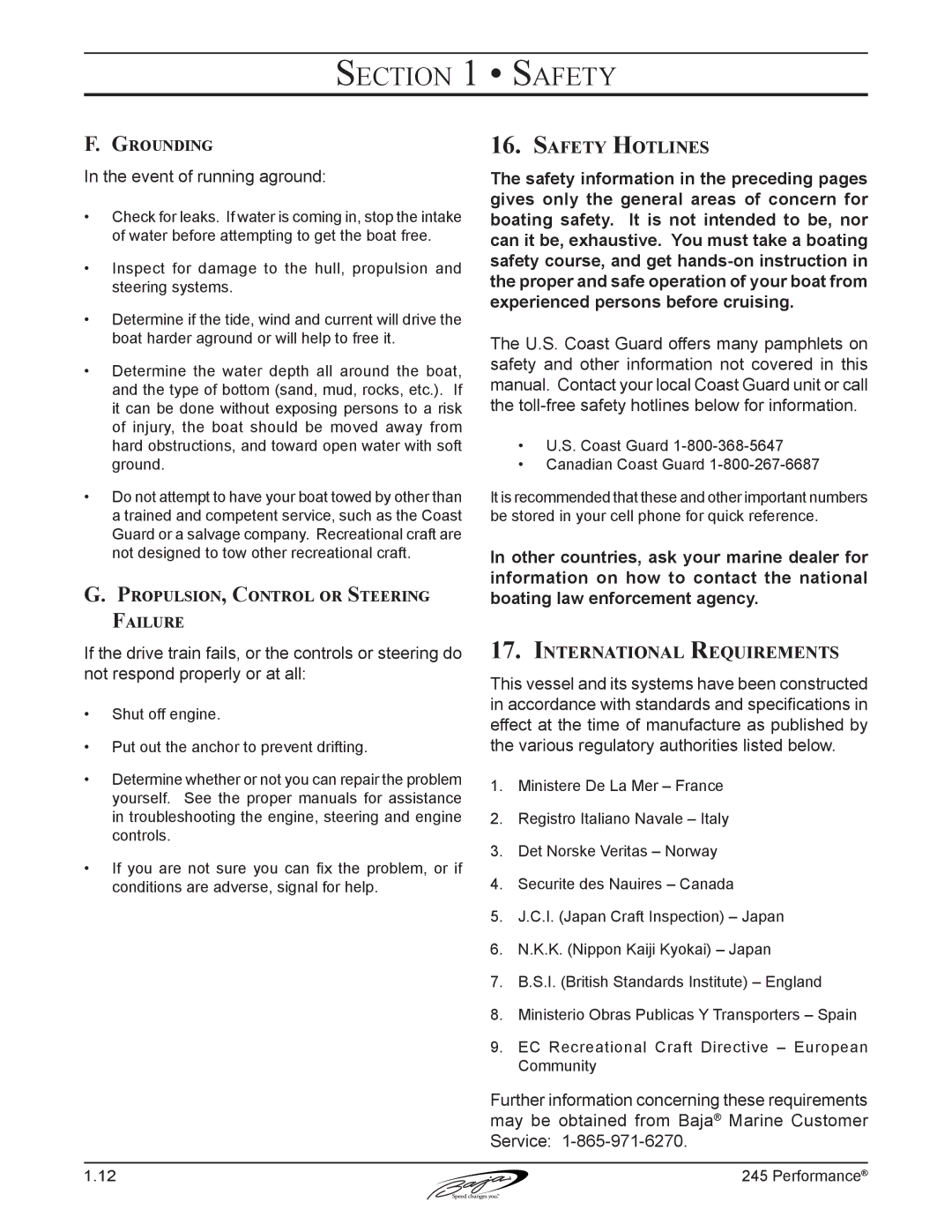
Section 1 • Safety
F.Grounding
In the event of running aground:
•Check for leaks. If water is coming in, stop the intake of water before attempting to get the boat free.
•Inspect for damage to the hull, propulsion and steering systems.
•Determine if the tide, wind and current will drive the boat harder aground or will help to free it.
•Determine the water depth all around the boat, and the type of bottom (sand, mud, rocks, etc.). If it can be done without exposing persons to a risk of injury, the boat should be moved away from hard obstructions, and toward open water with soft ground.
•Do not attempt to have your boat towed by other than a trained and competent service, such as the Coast Guard or a salvage company. Recreational craft are not designed to tow other recreational craft.
G.Propulsion, Control or Steering Failure
If the drive train fails, or the controls or steering do not respond properly or at all:
•Shut off engine.
•Put out the anchor to prevent drifting.
•Determine whether or not you can repair the problem yourself. See the proper manuals for assistance in troubleshooting the engine, steering and engine controls.
•If you are not sure you can fix the problem, or if conditions are adverse, signal for help.
16.Safety Hotlines
The safety information in the preceding pages gives only the general areas of concern for boating safety. It is not intended to be, nor can it be, exhaustive. You must take a boating safety course, and get
The U.S. Coast Guard offers many pamphlets on safety and other information not covered in this manual. Contact your local Coast Guard unit or call the
•U.S. Coast Guard
•Canadian Coast Guard
It is recommended that these and other important numbers be stored in your cell phone for quick reference.
In other countries, ask your marine dealer for information on how to contact the national boating law enforcement agency.
17.International Requirements
This vessel and its systems have been constructed in accordance with standards and specifications in effect at the time of manufacture as published by the various regulatory authorities listed below.
1.Ministere De La Mer – France
2.Registro Italiano Navale – Italy
3.Det Norske Veritas – Norway
4.Securite des Nauires – Canada
5.J.C.I. (Japan Craft Inspection) – Japan
6.N.K.K. (Nippon Kaiji Kyokai) – Japan
7.B.S.I. (British Standards Institute) – England
8.Ministerio Obras Publicas Y Transporters – Spain
9.EC Recreational Craft Directive – European Community
Further information concerning these requirements may be obtained from Baja® Marine Customer Service:
1.12 | 245 Performance® |
